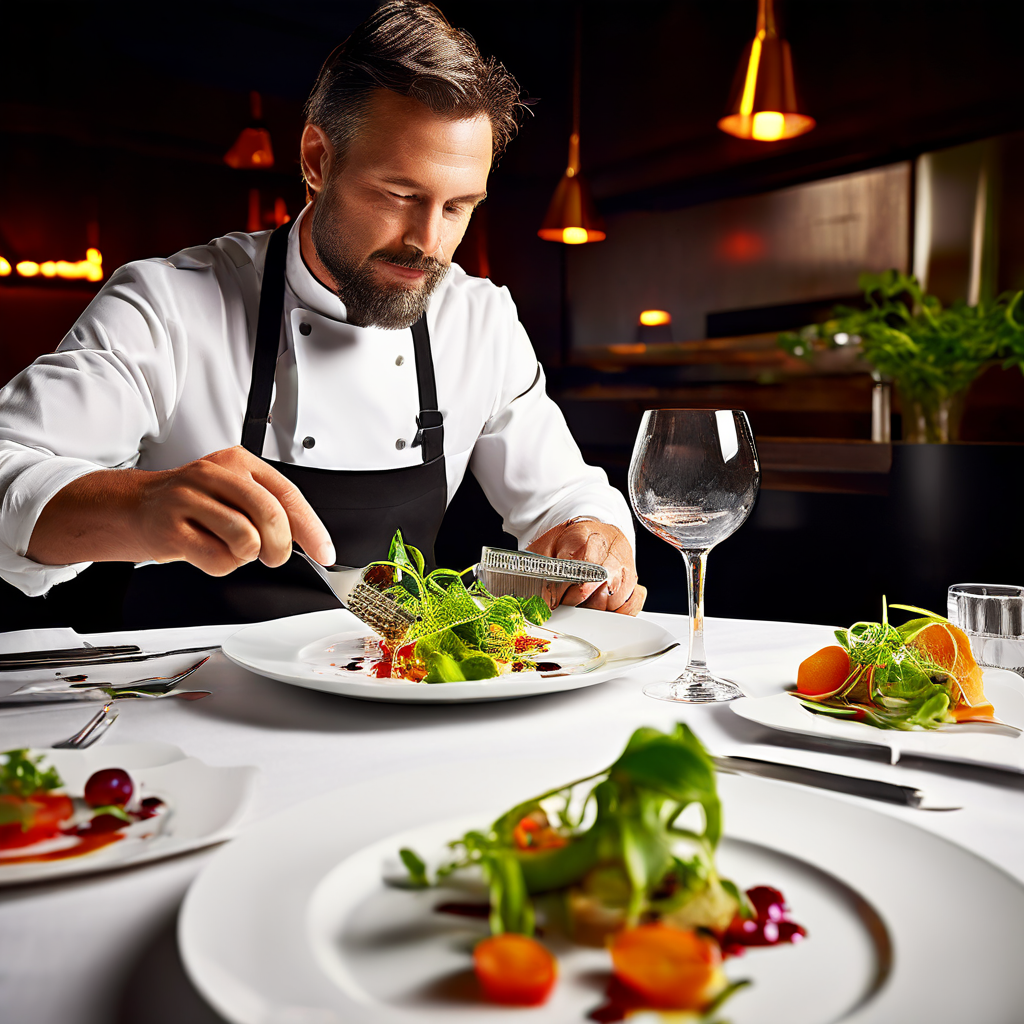In an era of rapid technological advancement, the restaurant industry is undergoing a profound transformation. From artificial intelligence to augmented reality, innovative technologies are reshaping every aspect of the dining experience, from how we order our meals to how restaurants manage their operations. This digital revolution is not just changing the way we eat out; it’s redefining the very concept of what a restaurant can be.
The integration of technology in restaurants has been accelerating for years, but the COVID-19 pandemic has dramatically hastened this trend. According to a report by the National Restaurant Association, 62% of adults say they’re more likely to use technology in restaurants now than before the pandemic. This shift in consumer behavior has prompted restaurants to invest heavily in digital solutions, creating a new landscape of dining that blends the physical and virtual worlds.
One of the most visible changes in restaurants has been the widespread adoption of contactless ordering and payment systems. QR code menus, once a novelty, have become commonplace, allowing diners to view menus, place orders, and pay their bills directly from their smartphones. This not only enhances safety by reducing physical contact but also streamlines the ordering process, improving efficiency for both customers and staff.
Artificial Intelligence (AI) is playing an increasingly significant role in the restaurant industry. AI-powered chatbots are being used to handle customer inquiries and reservations, providing instant responses and freeing up staff to focus on in-person service. More advanced AI applications are even assisting in the kitchen. For instance, Spyce, a Boston-based restaurant, uses robotic kitchen assistants to prepare meals, ensuring consistency and reducing labor costs.
The rise of delivery apps and ghost kitchens is another technological trend reshaping the industry. Ghost kitchens, which operate without a physical dining space and cater exclusively to delivery orders, have exploded in popularity. These kitchens leverage data analytics to optimize their menus and operations based on local demand, demonstrating how technology can create entirely new business models in the food service industry.
Augmented Reality (AR) is adding a new dimension to dining experiences. Some restaurants are experimenting with AR menus that allow customers to visualize dishes in 3D before ordering. This technology not only enhances the dining experience but also helps reduce food waste by ensuring customers are satisfied with their choices before the food is prepared.
Voice-activated assistants are another emerging trend in restaurant technology. Devices like Amazon’s Alexa or Google Home are being integrated into restaurant systems, allowing customers to make reservations, check wait times, or even place orders using voice commands. This hands-free approach to interaction is particularly appealing in a post-pandemic world where hygiene concerns remain at the forefront of many diners’ minds.
The back-of-house operations in restaurants are also benefiting from technological advancements. Inventory management systems powered by Internet of Things (IoT) sensors can track stock levels in real-time, automatically reordering supplies when they run low. This not only reduces waste but also ensures that restaurants always have the ingredients they need on hand.
Predictive analytics are being used to forecast demand, helping restaurants optimize their staffing and inventory. By analyzing historical data, weather patterns, and local events, these systems can predict busy periods with remarkable accuracy, allowing restaurants to prepare accordingly.
Sustainability is a growing concern in the restaurant industry, and technology is playing a crucial role in addressing this issue. Food waste reduction apps are helping restaurants donate excess food to local charities or sell it at a discount, reducing environmental impact while potentially creating new revenue streams.
While these technological advancements offer numerous benefits, they also present challenges. The cost of implementing new technologies can be prohibitive for smaller restaurants, potentially widening the gap between large chains and independent establishments. There are also concerns about data privacy and security, particularly when it comes to handling customer information through digital platforms.
Moreover, as restaurants become increasingly reliant on technology, there’s a risk of losing the human touch that many diners value. Striking a balance between technological efficiency and personal service will be crucial for restaurants moving forward.
Despite these challenges, the future of dining looks increasingly digital. As 5G networks become more widespread, we can expect to see even more innovative applications of technology in restaurants. Virtual reality dining experiences, where customers can “visit” restaurants from the comfort of their homes, may become more common. We might also see advancements in food 3D printing technology, allowing for highly customized dishes tailored to individual dietary needs and preferences.
The integration of blockchain technology could revolutionize supply chain management in the restaurant industry, providing unprecedented transparency about the origin and journey of ingredients. This could be particularly appealing to consumers who are increasingly concerned about food sourcing and sustainability.
As we look to the future, it’s clear that technology will continue to play a pivotal role in shaping the restaurant industry. From enhancing operational efficiency to creating novel dining experiences, these innovations are transforming every aspect of how we eat out. While challenges remain, the potential benefits of this digital revolution in dining are immense.
Restaurants that can successfully navigate this technological landscape, balancing innovation with the timeless appeal of good food and warm hospitality, will be well-positioned to thrive in this new era of dining. As diners, we can look forward to more personalized, efficient, and exciting restaurant experiences, powered by the cutting edge of technology.


 Tips & Advice5 years ago
Tips & Advice5 years ago
 News & Stories4 years ago
News & Stories4 years ago
 Restaurants4 years ago
Restaurants4 years ago
 Recipes4 years ago
Recipes4 years ago
 Kitchen Gadgets4 years ago
Kitchen Gadgets4 years ago
 Chefs5 years ago
Chefs5 years ago
 Kitchen Gadgets4 years ago
Kitchen Gadgets4 years ago
 Kitchen Gadgets4 years ago
Kitchen Gadgets4 years ago














